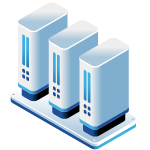IT leaders are finding themselves at a crossroads. While the public cloud once promised simplicity and infinite scalability, many companies are now struggling with runaway costs, vendor lock-in, and a frustrating loss of control. But what if there was a better way?
That’s the core question posed in a recent episode of the Jon Myer podcast, featuring OpenMetal’s President, Todd Robinson. Titled “Democratizing the Cloud: Is Private Cloud Making a Comeback?”, the conversation explores a “quiet revolution” where businesses are reclaiming their infrastructure destiny through the power of open source private clouds.
The Problem With Overpaying
Todd explained a crucial but often overlooked detail of public cloud billing. When you buy a Virtual Machine (VM), you’re not just paying for what you use, you’re paying for a certain amount of overhead to ensure performance spikes don’t bring your system down. As he notes, a VM’s resources are typically only 20-30% utilized on average, but you pay for the entire allocated amount. That means up to 80% of what you’re paying for could be going to waste.
With a private cloud, that dynamic changes completely. When you buy at the hardware level, any unused resources are automatically pooled and made available to other VMs. You’re no longer paying for empty space. You’re paying for what your business actually uses, a concept that can lead to significant cost savings.
A “Middle Ground” for Smart Businesses
OpenMetal positions itself as a strategic middle ground between the public cloud and a traditional, self-managed data center. This on-demand, hosted private cloud model gives you the ownership and control of a private environment without the hassle of managing power, racking hardware, or dealing with supply chain issues.
The benefits are clear:
- Ultimate Flexibility: Unlike proprietary mega-scale clouds, an open source private cloud allows you to modify the platform to fit your specific workloads, security needs, and compliance requirements.
- Access to Bare Metal: If your applications need direct access to high-performance GPUs or specific storage types, a private cloud gives you the power to configure your infrastructure down to the most fundamental level.
- Predictable Costs: The public cloud is great for short, burstable workloads, but if you’re a business with a consistently high and stable monthly bill, moving to a private cloud can provide long-term predictability and massive savings.
Why Open Source is a Game-Changer
The conversation also touched on how the Broadcom VMware acquisition serves as a stark warning about the risks of building on a proprietary foundation. When a vendor can arbitrarily double your bill or change their business model, it can put a company’s entire cost structure at risk.
Open source technology like OpenStack and Ceph provides a powerful alternative. It’s a massive, multi-billion-dollar industry with a mature ecosystem and a community dedicated to constant improvement. As Todd pointed out, the conversation has shifted. Private cloud is no longer seen as a risky, contrarian move for a CTO. Instead, it is a smart, strategic choice that allows businesses to reclaim control and protect themselves from unexpected market shocks.
Want to hear more? Check out the full episode to hear Todd and Jon’s discussion on the benefits of open source private cloud, and how it can help you get back to a predictable and profitable business model.
Read More on the OpenMetal Blog


































